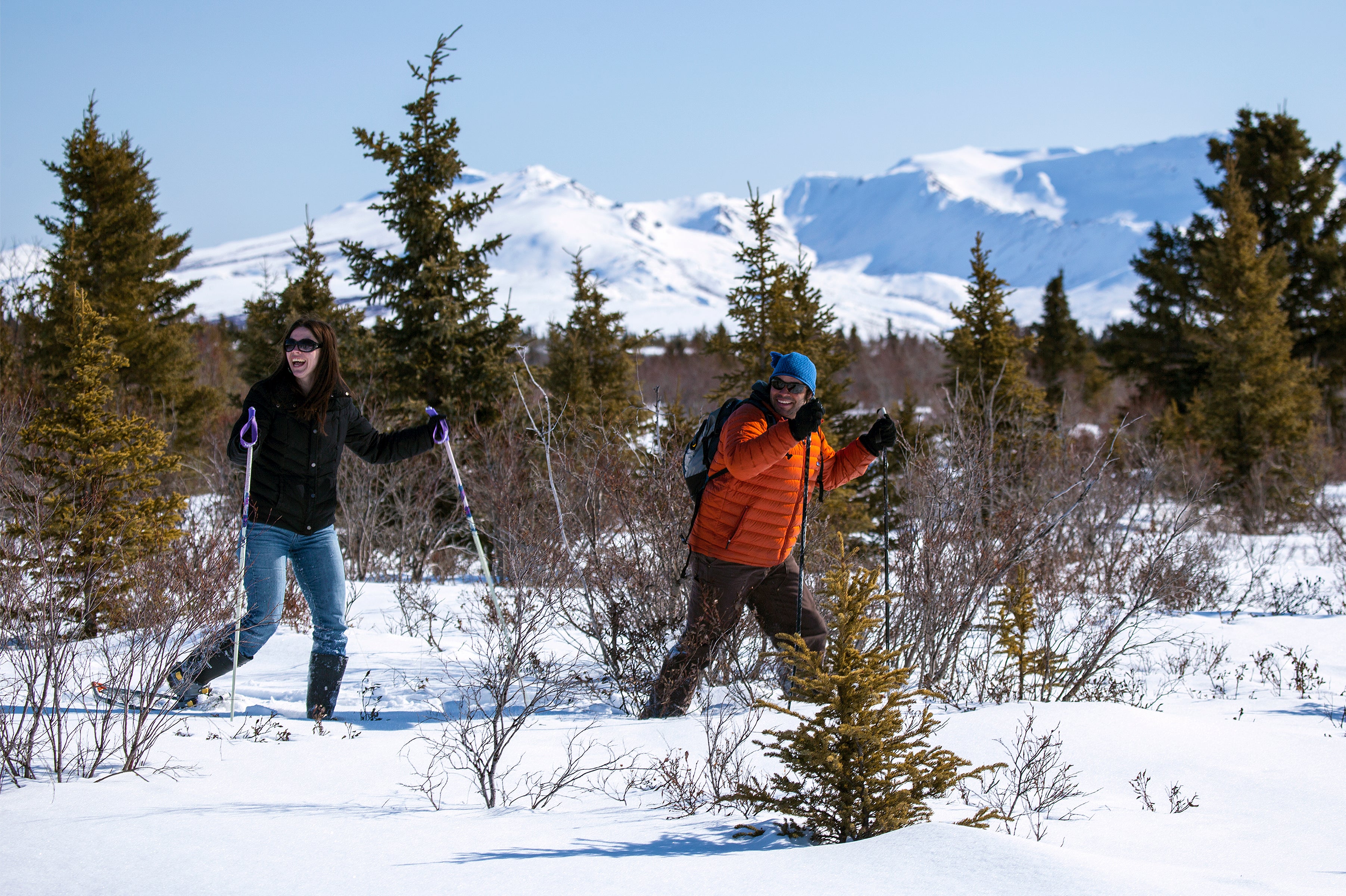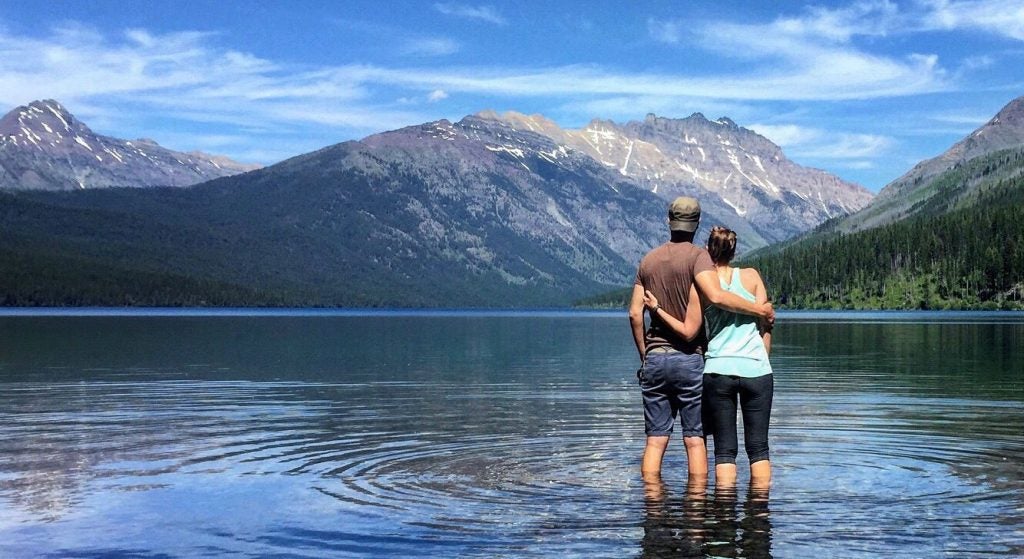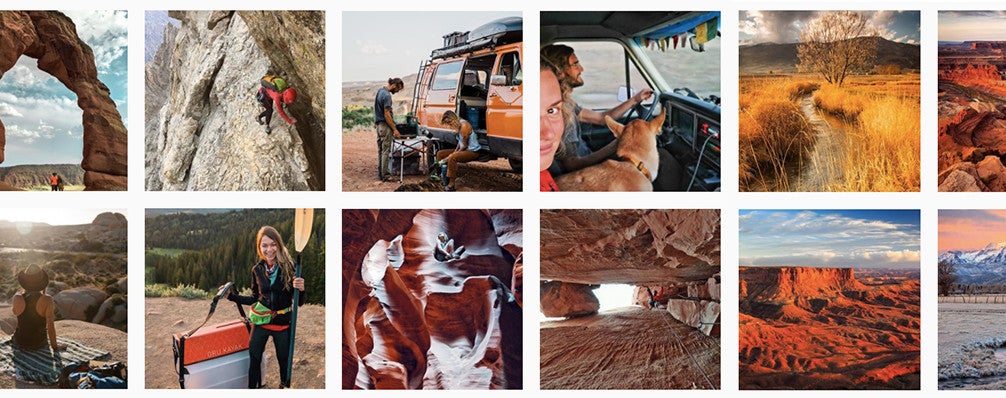Winter is on the horizon in the Pacific Northwest, and snow is piling up in the mountains. If you love the idea of basking in a winter wonderland, but don’t feel the need to speed down a slope, snowshoeing is a fun activity for everyone in the family. It’s easy enough to master in an afternoon, and challenging enough to get a great workout while you’re at it.
Plus, snowshoeing can give you access to quieter corners of wilderness where you can breathe deep and recharge on crisp, winter air.
Snowy PNW Trails (+ Camping) That Snowshoeing Aficionados Will Love
The Pacific Northwest offers plenty of trail for the eager snowshoer, from established and popular routes, to secluded and peaceful options. What’s the rush, downhill skiers? Fans of snowshoeing know how to take it all in.
While you’re at it, stay the night! We’ve located camping and some warmer lodging options near each of these snowshoeing trails.
1. Trillium Lake Loop, Oregon
Enjoy the reflection of Mount Hood’s snowy peak in the icy water of Trillium Lake. Despite its close proximity to the road, the snow-covered trees make this trail feel secluded in the winter time. You’re just a few miles from Government Camp, where you can grab a beer or a bite to eat at a few mountain town dive bars after your snowshoeing excursion. Or drive up Mt. Hood to the Timberline Lodge for more snowy fun in the form of skiing or snowboarding.
Camping: Trillium Lake Campground is one of the most popular in the state during the summer months. Unfortunately, it shuts down for winter. But if you’re looking to stay in the area over night, you can find dispersed camping throughout Mount Hood National Forest.
Get out of the cold: For some extra comfort and warmth, The Timberline Lodge offers budget accommodation in their bunk rooms for as low as $150/night.
2. Maxwell Butte, Oregon
For a much quieter Oregon trail, try Maxwell Butte at Santiam Pass. You’ll enjoy views of surrounding peaks including Three-Fingered Jack, Mount Washington, and Mount Jefferson. Maxwell SnoPark is well maintained with maps of the surrounding trails. You can add an excursion to Sisters, Oregon where you’ll find an old west vibe in the quaint yet busy town.
Camping: You’ll find a cozy camping option at Mountain View Shelter, accessible from Maxwell SnoPark. The shelter can fit up to 15 people.
3. Crater Lake National Park, Oregon
Oregon’s one and only National Park is a collapsed volcano, containing some of the brightest blue water you’ve ever laid eyes on. In the winter, Crater Lake National Park is one of the snowiest places in the country, with an average of 43 feet per year.
The park offers ranger-guided snowshoe walks on Saturdays and Sundays, from November 24 to April 29, and daily from December 16-January 1. The hikes are 1-2 miles of moderate to strenuous terrain and take 1-2 hours to complete. This is a great opportunity to soak up some ranger knowledge while getting your snow steps in. The best part? The walks are free and include free snowshoe rentals!
The park is open year-round, so if you’re looking for an unguided version, help yourself to the unplowed Rim Road where power is aplenty. Snowshoe rentals are available at the Steel Information Center.
Camping: Backcountry camping permits around the park are available at the Steel Visitor Center.
Get out of the cold: There are 17 log cabins available to rent year-round at Union Creek Resort, located minutes from the park entrance.
4. Artist Point, Washington
Experienced snowshoers will love Artist Point in the North Cascades. The stunning terrain lives up to the name, so make sure to take breaks from the challenging trail to enjoy the vistas. The Artist Point hike is 5.5 miles round trip with 1,200 feet in elevation gain.
Camping: Dispersed camping is allowed in the Mt. Baker-Snoqualmie National Forest.
5. Mount Tahoma Trails, Washington
At the base of Mt. Rainier lies North America’s largest hut to hut trail system for cross-country skiing and snowshoeing. There are 50 miles of trails, 30 of which are ungroomed — perfect for the snowshoeing fan who lies to stamp out fresh tracks. There are various trails for all levels, and volunteers patrol the area so you’ll feel safe, even if you’re venturing out for your first time. The rustic huts are free to use, making it easy to tackle a multi-day trip.
Camping: There are 4 huts along the trail. Reservations are recommended.
Are you ready to tackle some snowy trails? If you’re heading into the backcountry with your snowshoes, be sure to educate yourself on avalanche safety, and check-in with local ranger stations for additional information and services.
Looking for more camping options? You’ll find them on The Dyrt!
Related Articles:
- Lakes in Oregon camping
Popular Articles:
Articles on The Dyrt Magazine may contain links to affiliate websites. The Dyrt receives an affiliate commission for any purchases made by using such links at no additional cost to you the consumer.



